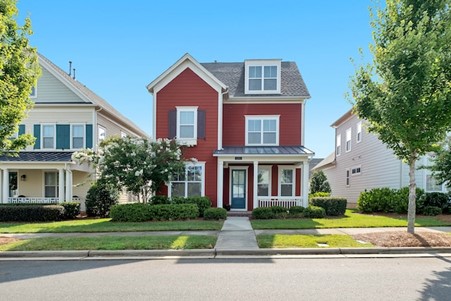Reed Pirain is a Partner with NextHome PPM Realty in Pittsburgh, PA with decades of experience. Born into a family of realtors, Reed prides himself on being in business with his siblings, and his experience of selling over 150 million dollars' worth in properties. In the article below, Reed Pirain discusses homeowner renovations for increasing home value, mistakes to avoid, how money-in does not equal money-out, and when to talk with an agent.
In the world of real estate, it is important to know where to spend money. It is a hard-earned lesson to discover that $30,000 worth of updates may only yield a $10,000 bump in home value.
Which improvements will pay off depends heavily on the market. An appraiser can give a more accurate picture of a home's unique market explains Reed Pirain. However, many popular updates that can increase a home's value include finishing an unfinished basement, swapping out old windows and doors, replacing the roof or siding, and remodeling the kitchen and bathrooms.
Reed Pirain explains more about when and why these updates have a large impact on a home's value, and which updates may be wiser to avoid below.
General Information on Updates and Home Value
Reed Pirain says that it is common for homeowners to pour tons of money into a home, thinking that they will get every penny back and more at resale. Or homeowners believe that the home will appraise much higher after improvements than it did originally so they can refinance and pay off all the debt accumulated.
What is important to understand, however, is that value is decided by the market itself, not necessarily by what a homeowner spends on upgrades or what they think their home is worth explains Reed Pirain.
When an Upgrade Led to Disappointing Results
Reed Pirain provides a brief example of a new homeowner named Ralph who misunderstood how value is derived, and suffered difficult consequences for not understanding the market:

How to Tell Which Updates Will Count
A good rule of thumb is to examine the condition of the home compared to other homes in the neighborhood says Reed Pirain. If a home is the only one on the block that has outdated single-pane windows, aged siding, a leaky roof, or Formica countertops, updating these things typically brings the home up to the value of comparable homes in the area.
Another way to think about it is to imagine how potential buyers think explains Reed Pirain. What about the home would potential buyers want to replace before they move in? Several of the same items make the list. A home buyer will pay more for a home if they do not have to complete vital updates prior to moving in, especially in kitchens and bathrooms.
Appraisers use condition ratings to differentiate how well-kept a home is. It can be beneficial to speak to local agents or appraisers to get a sense of what percent increase is typical in the market going from one condition rating to the next.
There are reference guides such as Zillow that explain updates that increase home value in typical markets. Speaking to a real estate agent is also highly recommended. Remember that this is a general guide and does not reflect the reality in every neighborhood, town, or community.
Remember that Buyers Have their Own Preferences
Another common practice is for homeowners to update their home in ways they prefer before putting it on the market and enjoying those upgrades for an extended period of time. For example, replacing carpet with hardwood flooring, fresh paint, or a remodeled basement can do the trick.
If attempting to upgrade and sell the home within 5 years, agents say that homeowners should consider upgrading based on what potential buyers may prefer instead. A potential buyer may take one look at the brand-new carpet and say, I love the house, but I can't stand carpet! Buyers may try to work in a replacement floor contingent on sale, at the owner's expense.
It may also be tempting to make a home the best one on the block. But remember, the buyer isn't going to pay more than the market supports. If the buyer is willing to, the bank will not fund it.
Updates Buyers Want to See
Finishing a basement often adds value to a home because people love to have extra, useable living space. Families also love to spend time creating meals in a beautiful, updated kitchen.
Remember to tailor all updates to what is aesthetically pleasing to the public and fits in well with the style of the home and the atmosphere of the neighborhood. Resist the urge to do anything unusual or appealing to your tastes if they are not in-line with what the typical buyer is looking for.
Summary
Remember that making the best use of money when it comes to home upgrades takes a market-approach. Do not assume that money in equals money out. If you feel lost, you may want to hire an appraiser or agent to do the market research for you.